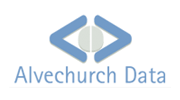Building the structure of a switchboard
Adding new switchboards
![New entries in the Access Switchboard Manager. [The Switchboard Manager with new entries.]](../media/images/switchmanager2.gif) Every step in the Switchboard Manager asks you to select from a series of
options. This makes getting started a little difficult because you can't
add anything to the main switchboard until that item exists in the
switchboard system. The first thing to do then is to add all the
subsidiary switchboards that you are going to need.
Every step in the Switchboard Manager asks you to select from a series of
options. This makes getting started a little difficult because you can't
add anything to the main switchboard until that item exists in the
switchboard system. The first thing to do then is to add all the
subsidiary switchboards that you are going to need.
Click the button and enter the name of a new
switchboard when the dialog appears. Keep
doing this until you have all the second-level switchboards that you are going to
need. In our system we added switchboards named Client, Enquiry, People
and Reports to lead the user to the four most important areas of the
database.
Once these lower level switchboards exist you can go back to your main
switchboard and start adding entries to it. Click the
button then make changes to the
form that appears:
![Using the Access Switchboard Manager to add a new switchboard. [Adding new switchboards to the Switchboard Manager.]](../media/images/switchadd.gif)
The
entry will appear saying "New Switchboard Command". Change this to
the wording you want the user to see. Leave the
as "Go to Switchboard" and pick
the switchboard that you want from the dropdown list.
This dropdown list is the reason why you have to define the lower-level
switchboards before you can finish the design of the main one. It's
annoying but it does force you to spend a little time thinking about the
structure of the application before you start working on it.
Adding forms
As with the lower-level switchboards, the forms have to exist before you
can add them to the switchboard structure. If the form exists then the
Switchboard Manager gives you two options in the dropdown list of
commands:
and
.
Separating the Add and Edit functions like this gives a consistent
appearance to the whole system. Users will always see similar pages in
front of them. In our example the Clients option leads them to a
switchboard offering "Add Client" and "Edit Client" and a couple of more
complex options. The "Enquiry" page looks much the same.
If you have a simple database application then a single switchboard might
give you enough options. The form has eight buttons so if you only have
four or five forms there is no need to add any subsidiary switchboards.
Every form can have its own a button on the main switchboard.
Navigation
The structure created by the Switchboard Manager does not automatically
give you a way of going back up the tree. Remember to add a "Return to
main switchboard" entry after you've added the entries for forms and
reports on each switchboard.
The main switchboard needs a different approach to let the user leave the
application and close the database.
Select the main switchboard on the Switchboard Manager dialog. Click
as usual to add a new entry but select
from the dropdown list of commands.
![Using the Access Switchboard Manager to add a close database button. [Adding a close button to the Switchboard Manager.]](../media/images/switchexit.gif)
Other pages in this series
Part 1
Getting started
Part 2
Building the structure
Part 3
Improving the appearance
Part 4
Behind the scenes
|

